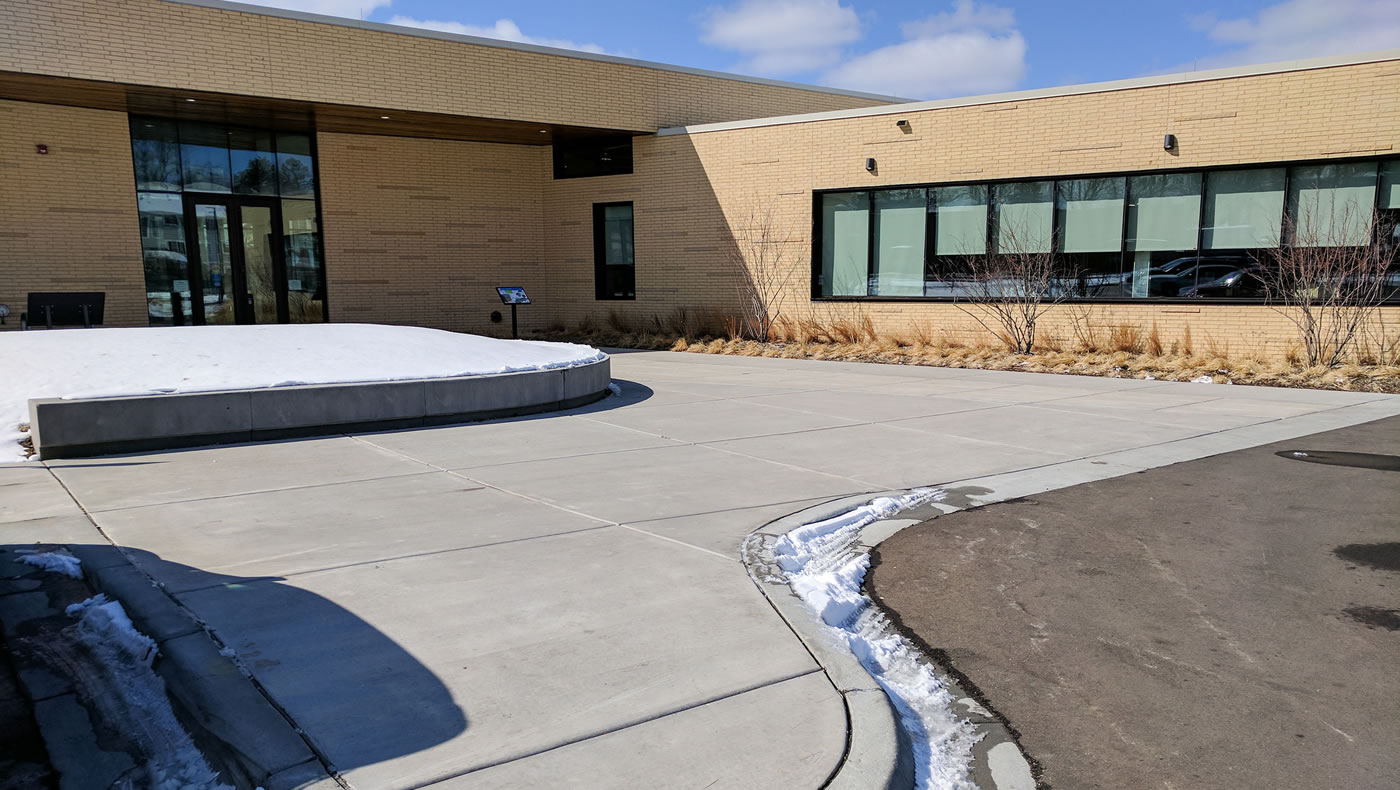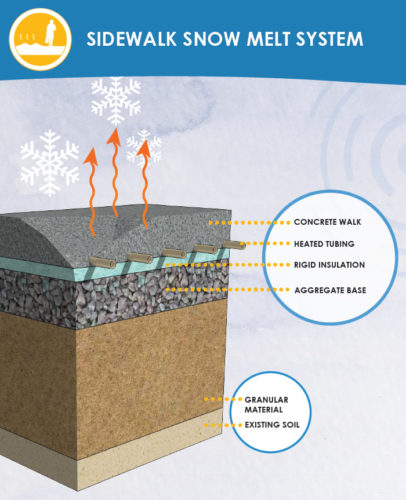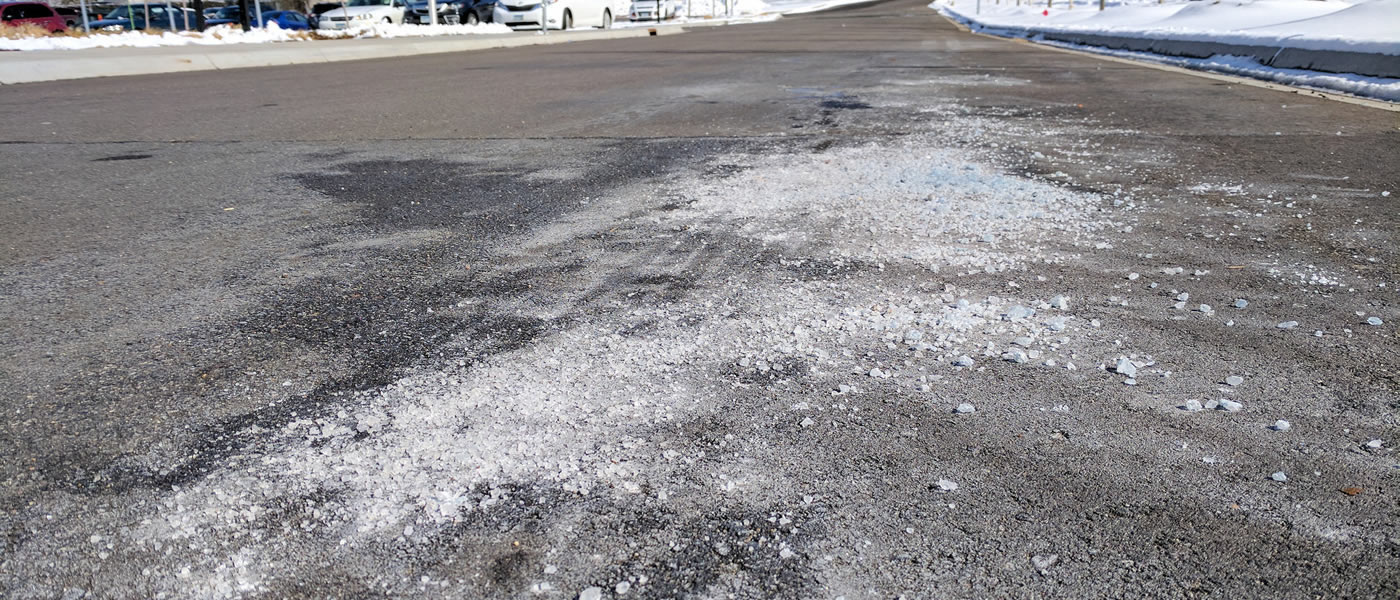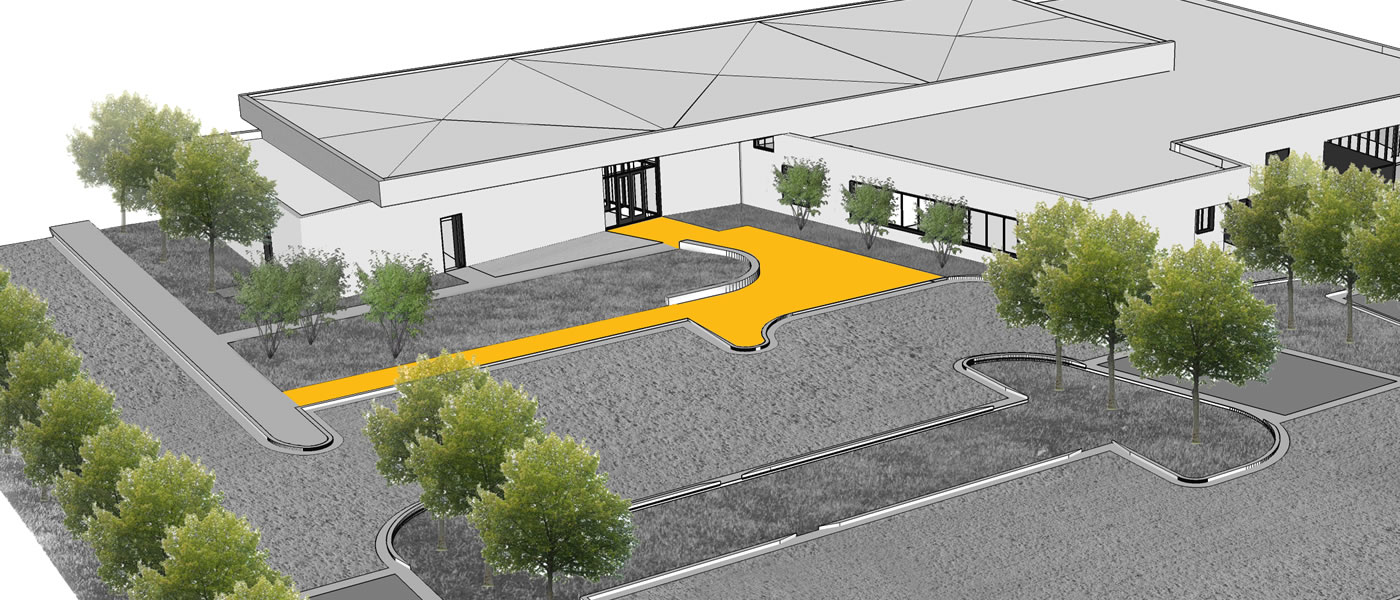No salt required: sidewalk snowmelt system fights snow and ice

If you’re from the Twin Cities, you’re likely no stranger to the hazards posed by icy pavement. Salt and deicers may seem like necessary evils when it comes to keeping sidewalks safe in winter, but there are other, more environmentally friendly ways of achieving safe sidewalks.
If you visit the Columbia Heights Public Library after a recent snowfall, you might notice that the sidewalk between the parking lot and the entrance is clean, dry and safe, without any evidence of salt or deicer being used. That’s because below the concrete slabs are coils filled with antifreeze that heat the sidewalk and prevent ice from forming. That’s right, absolutely no salt or sand required — and no shoveling!
 The snowmelt system is one of several landscape features at the library designed to prevent pollution from stormwater runoff. It specifically addresses the issue of chloride, which comes from road salt and deicers that wash into storm drains and end up in rivers and lakes. Chloride is toxic to aquatic life and virtually impossible to remove. It’s also potent: a single teaspoon of that road salt is enough to permanently pollute 5 gallons of water.
The snowmelt system is one of several landscape features at the library designed to prevent pollution from stormwater runoff. It specifically addresses the issue of chloride, which comes from road salt and deicers that wash into storm drains and end up in rivers and lakes. Chloride is toxic to aquatic life and virtually impossible to remove. It’s also potent: a single teaspoon of that road salt is enough to permanently pollute 5 gallons of water.
By avoiding the need for salt, the library’s snowmelt system helps keep chloride out of the local stormsewer system and away from nearby waterbodies. But how much pollution can this little system really prevent? Let’s do the math.
Let’s assume the site was previously salted at a rate of 1 pound per 250 square feet (this is the recommended amount, although maintenance professionals have been known to over-apply). That’s 9.28 pounds of salt per snow event that would have been used on this 2,320-square-foot stretch of sidewalk.
Without the snowmelt system, that 9.28 pounds of salt would have been enough to contaminate up to 3,700 gallons of water. That’s a tremendous amount for just one round of salt on a small patch of sidewalk.
How much salt does the system save over the course of a year? It depends on the weather, of course, but let’s assume that salt would have been used whenever it snows more than 1 inch. Using the most recent climate data from the Minnesota Department of Natural Resources, that happens approximately 16 times per year. If 2016 followed this trend, 148.48 pounds of salt would have been saved over the course of this winter — an amount with the potential to contaminate 59,200 gallons of clean water. (For comparison, that’s the equivalent of approximately 1,700 bathtubs.)
In terms of financial benefits, the system will only save the library about $40 per year in road salt. But the concrete sidewalk itself will last much longer than a sidewalk that has had salt applied to it, and the nearby landscaping will flourish without the added stress of harsh salts.
Though much more understated than a large cistern or a brightly colored rain garden, this stormwater best management practice will continue to work through the harsh Minnesota winters to yield substantial savings in time and money and keep sidewalks safer for both library patrons and the environment.
Bonus: If you want to see a larger-scale version of a snowmelt system, check out the train station platform at Target Field.


Learn More
Columbia Heights Library (project page)





